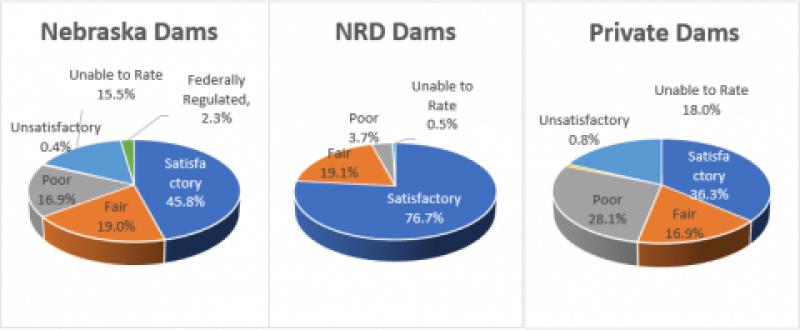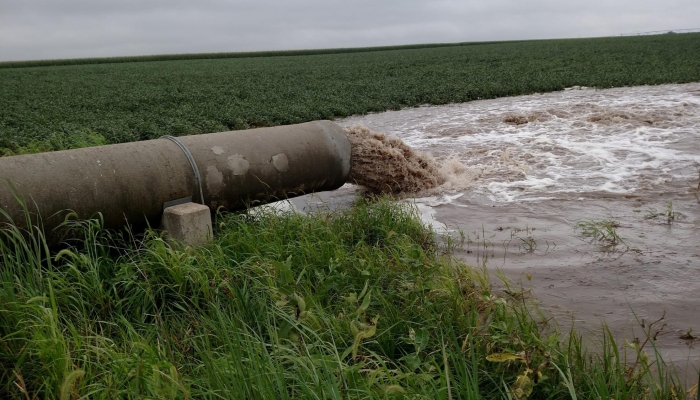Importance of Maintaining/Rebuilding Nebraska’s Dam Infrastructure
Dams are owned and operated by individuals, private and public organizations, and the government. The responsibility for maintaining a safe dam rests with the owner. Proper operation and maintenance of a dam is key to preventing a failure and limiting the liability of the owner.

The Nebraska Department of Natural Resources inspects inventory size dams on a set schedule, ranging from annually for high hazard dams to once every five years for low hazard dams. Each dam is assigned a condition rating:
- Satisfactory--acceptable performance expected
- Fair--dam may fail under extreme conditions
- Poor--dam may fail under expected conditions
- Unsatisfactory--dam failure is likely
- Unable to Rate--not enough information to rate

These dams provide benefits such as flood control, sediment and erosion control, water conservation, groundwater recharge, and fish and wildlife benefits. Flood control benefits alone provide an estimated annual benefit of over $62 million per year.
Nebraska’s Dam Infrastructure
Estimated Annual Flood Control Benefits
Number of Dams |
Controlled Drainage Area (mi2) | Annual Benefit (per mi2) # | Estimated Total Annual Benefit | |
| All Dams*O | 2638 | 6870 | $9,046 | $62,146,020 |
| NRD Dams* | 950 | 2819 | $9,046 | $25,500,674 |
| Private Dams*O | 1394 | 2733 | $9,046 | $24,722,718 |
# Estimated Annual Flood Control Benefits from Natural Resources Conservation Service Study
* Does not include dams with drainage are greater than 100 mi2
o Does not include livestock waste lagoons
Many private dam owners face challenges when considering major maintenance activities of aging dams or decision to rebuild dams that have already failed. Landowners must weigh costs and benefits along with the liability of owning a dam. Programs such as the Upper Big Blue NRD’s Private Dams Program provide technical assistance and financial incentives to landowners wishing to rebuild failed structures.
The Upper Big Blue NRD’s Private Dams Program provides landowners with an opportunity to correct or re-build privately owned dams. The UBBNRD will provide 75 percent of the project costs up to a maximum cost-share of $50,000. Eligible costs include construction and design services provided by a private engineering firm. (The cost-share for design services will only be reimbursed if the dam is constructed.)
Four dams were completed during the first year of the program, seven during the second year, and two during the third year. The average construction costs for these thirteen dams was approximately $24,000, with an average NRD cost share of $18,000. The average drainage area of these completed dams is 182 acres. Storage capacity averages 5 acre-feet with an additional 15 acre-feet of flood storage.
Interest in the Private Dams Program continues in the programs fourth year as two larger dams are under construction and two other dams have been approved for cost share funds. A number of other dams are in the initial evaluation phase for inclusion in the program. The UBBNRD would like to recognize the staff of the Natural Resources Conservation Service for the design and construction support services provided to this popular program.
If interested in applying or for further information, contact the Upper Big Blue Natural Resources District or your local NRCS Office.
Some information quoted in this article came from the Nebraska Department of Natural Resources Dam Safety Office.

